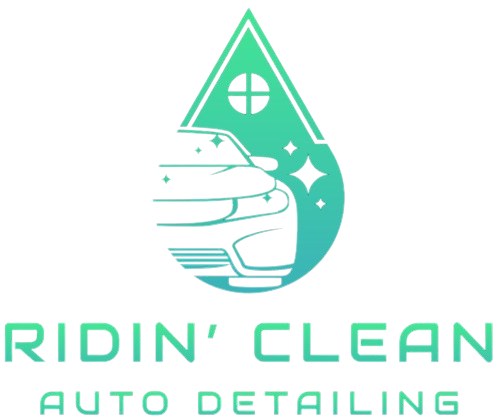Your car’s paint isn’t just about looks—it’s the first line of defense against the elements. Unfortunately, one of the most common threats to paint health is oxidation. If you’ve ever seen a car with dull, chalky, or faded paint, you’ve witnessed oxidation in action. Left unchecked, oxidation can permanently damage your vehicle’s finish and lower its value.
The good news? With the right care, you can prevent oxidation and keep your car’s paint glossy for years. This guide will walk you through what oxidation is, what causes it, and the best steps to avoid it.

What Is Paint Oxidation?
Paint oxidation is a chemical reaction that occurs when oxygen and UV rays break down the paint molecules on your vehicle. Over time, the clear coat deteriorates, leaving the paint exposed to fading, discoloration, and chalky residue.
Signs of Paint Oxidation:
-
Loss of gloss or shine.
-
Fading or dull spots.
-
White or chalky residue on the paint’s surface.
-
Rough texture when you run your hand over the car.
If you catch oxidation early, it can often be corrected with polishing or paint correction. But if ignored too long, repainting may be the only solution.
What Causes Oxidation?
Oxidation is usually caused by prolonged exposure to harsh elements. Here are the main culprits:
-
UV Sunlight: Constant exposure to UV rays breaks down clear coat protection.
-
Pollution and Contaminants: Dirt, acid rain, and industrial fallout weaken paint integrity.
-
Neglected Maintenance: Failing to wash, polish, or protect your car leaves the paint vulnerable.
-
Improper Washing Products: Using harsh detergents or dish soap strips away protective layers.
Step 1: Regular Washing
The foundation of oxidation prevention is consistent car washing. Dirt, bird droppings, tree sap, and other contaminants left on the paint accelerate oxidation.
-
Use a pH-balanced car shampoo instead of household cleaners.
-
Wash every 1–2 weeks to remove harmful buildup.
-
Dry with a microfiber towel to avoid water spots.
For more tips on washing properly, check out our blog on can washing your car really damage paint correction?.
Step 2: Polishing and Paint Correction
Even with regular washes, micro-scratches and fading may appear. That’s where polishing comes in.
Polishing removes a thin layer of clear coat to eliminate dullness and restore shine. Professional detailers often use a three-stage car polishing system—cutting, refining, and finishing—to correct oxidation and revive your paint.
Learn more in our detailed post on the three stages of car polishing.
Step 3: Waxing for Protection
Waxing is one of the easiest ways to shield your paint from UV rays and contaminants. A good wax acts as a sacrificial barrier, absorbing damage so your paint doesn’t have to.
-
Apply wax every 2–3 months for consistent protection.
-
Use quality wax designed for automotive finishes.
-
Always apply on a clean, dry surface.
To understand what might weaken or damage your wax, read our guide on what can actually cause damage to your car wax application.
Step 4: Ceramic Coating for Long-Term Defense
For a more durable solution than wax, many car owners choose ceramic coating. Ceramic coatings bond to your car’s paint at a molecular level, creating a long-lasting protective shield.
Benefits of ceramic coating include:
-
UV resistance to slow oxidation.
-
Hydrophobic properties that repel water and dirt.
-
Years of durability compared to months with wax.
-
Enhanced depth and gloss.
Not sure if it’s right for you? We’ve compared ceramic coating for new vs. used cars to help you decide.
Step 5: Consider Paint Protection Film (PPF)
If you want ultimate defense against both oxidation and physical damage, Paint Protection Film (PPF) is an excellent option. PPF is a clear polyurethane layer applied over the paint that not only resists oxidation but also blocks scratches, chips, and stains.
For the best results, you can even combine PPF with ceramic coating. If you’re debating which to do first, our blog on Should you do PPF or ceramic coating first? explains the proper order.
Step 6: Smart Parking and Storage
Where you park your car plays a big role in paint health.
-
Shade: Park in shaded areas to reduce UV exposure.
-
Garage: Store your car in a garage whenever possible.
-
Car Covers: Use a breathable car cover if outdoor parking is unavoidable.
These small steps significantly reduce the risk of oxidation.
Step 7: Professional Detailing
While DIY care is great, professional detailing ensures your car receives the highest level of protection. Detailers have access to:
-
Professional-grade polishes and compounds.
-
High-quality waxes and ceramic coatings.
-
Expertise in safely correcting and preventing oxidation.
At Ridin’ Clean Auto Detailing, we specialize in paint correction, ceramic coating, waxing, and PPF installation to protect your vehicle from oxidation and keep it looking brand-new.
Final Thoughts
Oxidation may be one of the biggest threats to your car’s paint, but it’s also one of the most preventable. With a proper routine of washing, polishing, waxing, and advanced protection like ceramic coating or PPF, you can keep your car shining for years to come.
Remember: prevention is always cheaper than correction. Don’t wait until your paint fades—take action today to preserve your vehicle’s value and appearance.
Call to Action
Looking to protect your car from oxidation? Trust the professionals at Ridin’ Clean Auto Detailing in San Diego. We provide expert auto detailing, car waxing, paint correction, ceramic coating, and PPF installation to keep your car’s paint flawless.
Contact Ridin’ Clean Auto Detailing today and let us give your car the protection it deserves!









